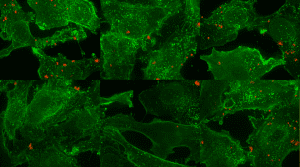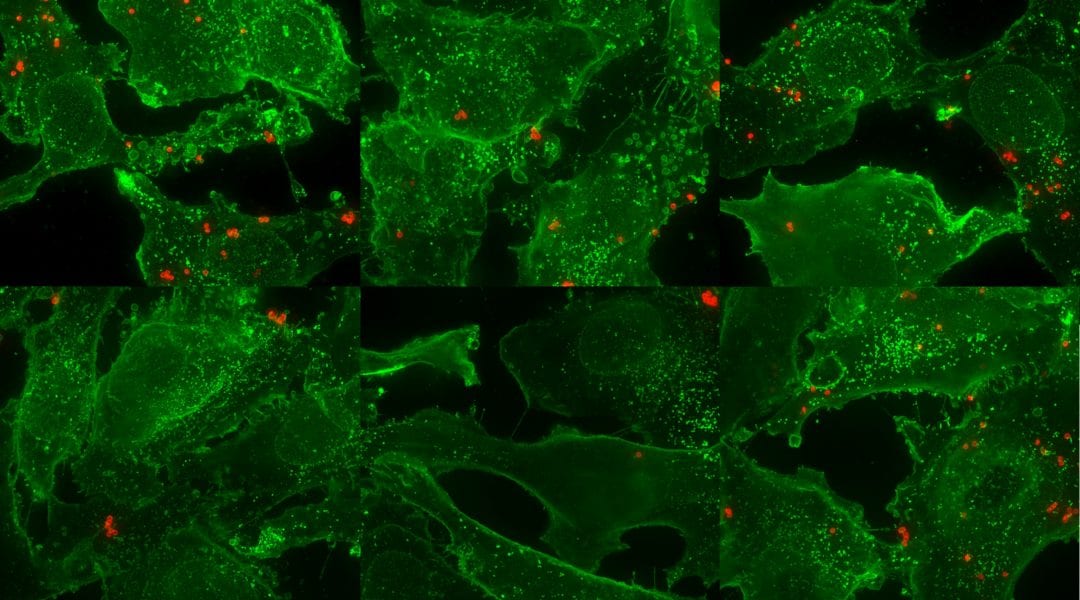How do nanomedicines reach their targets?
Advances in nanotechnology have now made it possible to engineer nanoparticles with specific and tailored properties. These types of nanoparticles are of interest for biomedical applications such as imaging, diagnosis and therapy. To further enhance the functionality of nanoparticles, they can be functionalized with targeting ligands (such as antibodies).
Drug-loaded and targeted nanoparticles may enable the selective delivery of therapeutics to different sites in the body, such as specific tissues or cancer cells. As a result, this can reduce side effects of the drug as well as improve its overall efficacy.

Figure 1. Nanoengineered particles (red) targeting cancer cells (green) under different conditions.
However, once these types of nanomedicines are applied into the body (for example, via injection into the blood stream), they interact with the biological environment in numerous ways in several complex processes that are poorly understood. For example, when nanoparticles enter the biological environment, biomolecules such as plasma proteins adsorb onto them and form what is called a ‘protein corona’.
This nanoparticle corona changes the nanoparticle’s ‘synthetic identity’ into a ‘biological identity’, and it will dictate many downstream biological interactions of the nanoparticle. For example, it can interfere with targeting abilities of the nanoparticle and make the behavior of nanoparticles in biological environments difficult to predict.
Scientists led by Professor Frank Caruso at the University of Melbourne in Australia, discuss the current understanding of these complex behaviors, and the future research efforts that are needed to increase understanding in this area for Advanced Healthcare Materials. Topics in this Review include how particle design, selection of targeting ligand, and specifics of the biological environment influence the performance and targeting ability of drug-loaded nanoparticles.
One important focus of this Review is the protein corona. Research aimed at reducing protein adsorption or even tune and exploit the protein corona to improve the targeting ability of nanoparticles is discussed. For example, how the recruitment of certain proteins to promote targeting by maintaining proper protein conformation can be used to prolong the circulation lifetime of nanoparticles in the blood stream.
The article also highlights important factors for evaluating particle targeting in biological environments, and provides suggestions for complementing current assays with new and emerging techniques. These include “3D cell culture systems” and “flow-based technologies”.
The review provides insight into the design–performance relationship of nanomaterials in biological environments. Understanding this relationship is important for guiding future research efforts towards increasing fundamental bio–nano interaction, and for accelerating the development of new nanoparticles for biomedical applications, leading to new treatments for diseases ranging from cancer to diabetes and HIV.

















